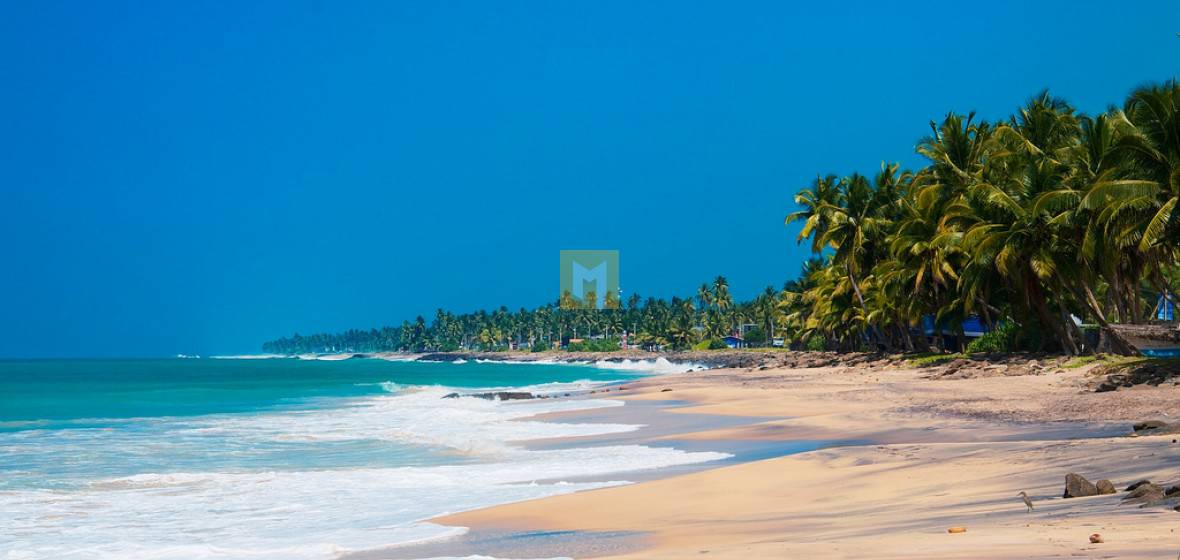Top Places
When is the best time to visit Sri Lanka?

When is the best time to visit Sri Lanka?
Nestled in the southernmost tip of India, between the Bay of Bengal and the Lakkadive Sea, lies the tropical island of Sri Lanka. It is the 25th largest island in the world and its coastline is lined with palm trees as far as the eye can see. Combined with temperatures hovering around 27°C (80°F) all year round thanks to its proximity to the equator, Sri Lanka has a lot to offer both thalassophiles and sunbathers when it’s not raining.
The island’s climate is dictated by two main monsoon seasons, and since they alternate, Sri Lanka can be considered a tourist destination all year round. Because while Arugum Bay on the east coast is too dangerous to surf, the sea off the west coast at Kalpitiya is hardly a poor option due to the presence of blue whales. In short, there is always something dry all year round, but plan your trip in these months to avoid boring days at the beach.
Basically, the best time to visit the west and south coasts and the hills is from December to March, while the best weather on the east coast is from April to May to September.
October to March: Best to visit the west and south coasts
It includes: Chilaw in the west, Galle in the south and the capital Colombo in the southwest
While temperatures are fairly consistent throughout the year at 27-29°C, this region experiences the Yala monsoon season from April to September. During this period, April, May and June are the rainiest months. Most beach hotels are located in this area.
If you want to go to the beach, go between October and March, which promises the best weather, although showers are not out of the question.
If you want to take a dip in the sea, plan your vacation between January and March when the sea is calm. Another plus is that these are the months when you have the best chance of seeing blue whales and sperm whales.
Revelers should be there in April for the Sinhala and Tamil Nadu ‘New Year Festival’. This marks the end of the Sri Lankan harvest season for the Sinhalese. The festival usually lasts about a week and hosts a variety of social and foodie events – galore!
Esala’s traditional festivals begin in July, the first of which is held in Kataragma. The festival celebrates the memory of the Buddha’s earliest teachings. Participate in the Kataragama event and you can see Borukakul Karayo whipping, elephants, hewisi drumming and pedestrians.
Alternatively, another Esala festival will be held in August, but this time in the Kandy region. Specifically, this festival lasts for ten days, and like Kataragama, there are dancers, jugglers, musicians, fire eaters, and ornately decorated elephants for those who wish to participate. Be sure to taste the local delicacies, such as okra and banana blossom.
It is worth noting that the Sri Lankan schools are in full swing for their second semester in May, June and July. So if you want a peaceful or even child free vacation, these are the best months to travel accordingly.
March – Best time to visit Central Hills
Includes: Kandy, Nuwara Eliya and Peradeniya Botanical Gardens
The Central Hills are a mountainous region in the south-central part of Sri Lanka. The triangular area of Mäkinen reaches a height of more than 300 meters and covers about 20% of the island’s total area.
Due to its location and altitude, the central hills are cool all year round and in fact much cooler than the coastal areas with an average temperature of around 15°C. January-March is usually the sunniest and driest period. The rainiest months are usually October and November.
Do I need a visa for Sri Lanka?
Visas for Sri Lanka are divided into three categories: business travel visas, tourist visas and transit visas.
April to September – the best time to visit the eastern and northern regions
Includes: Eravur, Passikudah and Trincomalee to the east and Habarana and Vavuniya to the north and Trincomalee to the northeast
The ‘Maha’ monsoon season hits the eastern and northern regions from November to March, with the wettest months being November and December. So to avoid that, go there between April and September.
August and September are generally dry and more recommended for family holidays, although it can get very hot and showers are short and heavy at this time.
Note: Go during the school year between January and April when things are naturally much quieter.
October and November – intermonsoon season
The inter-monsoon period is highly unstable and severe floods and thunderstorms can occur anywhere at any time. On the plus side, this is out of season so no crowds, which is great if you don’t mind unpredictable showers.
The Deepavali (Diwali) festival, which means “festival of lights”, is also held every year in October or November, depending on the Hindu lunar calendar. It is a truly wonderful event where you can witness houses made by locals, try local food and visit Kandaswamy Kovil, one of the most admired Hindu temples in Sri Lanka.
















